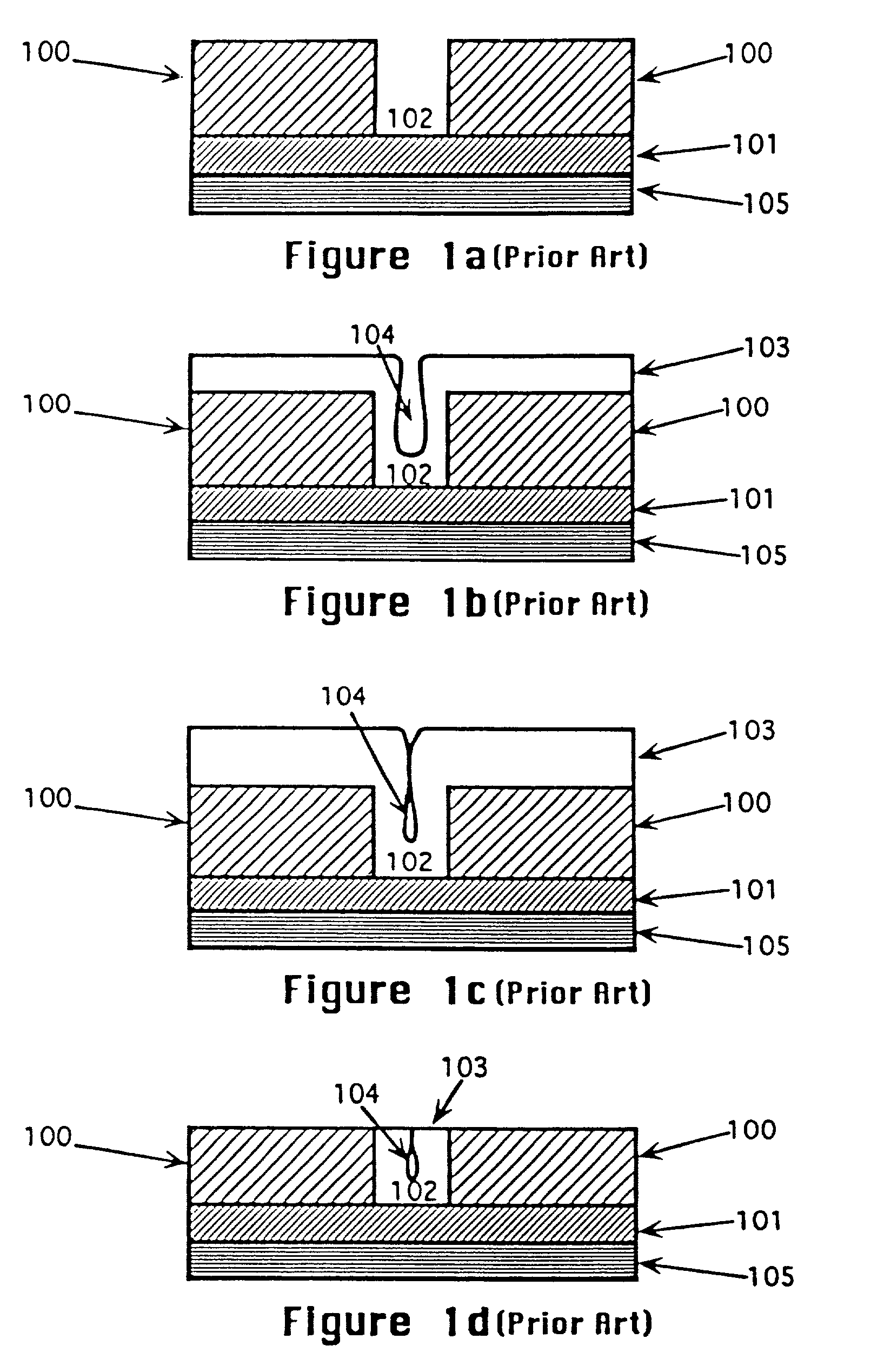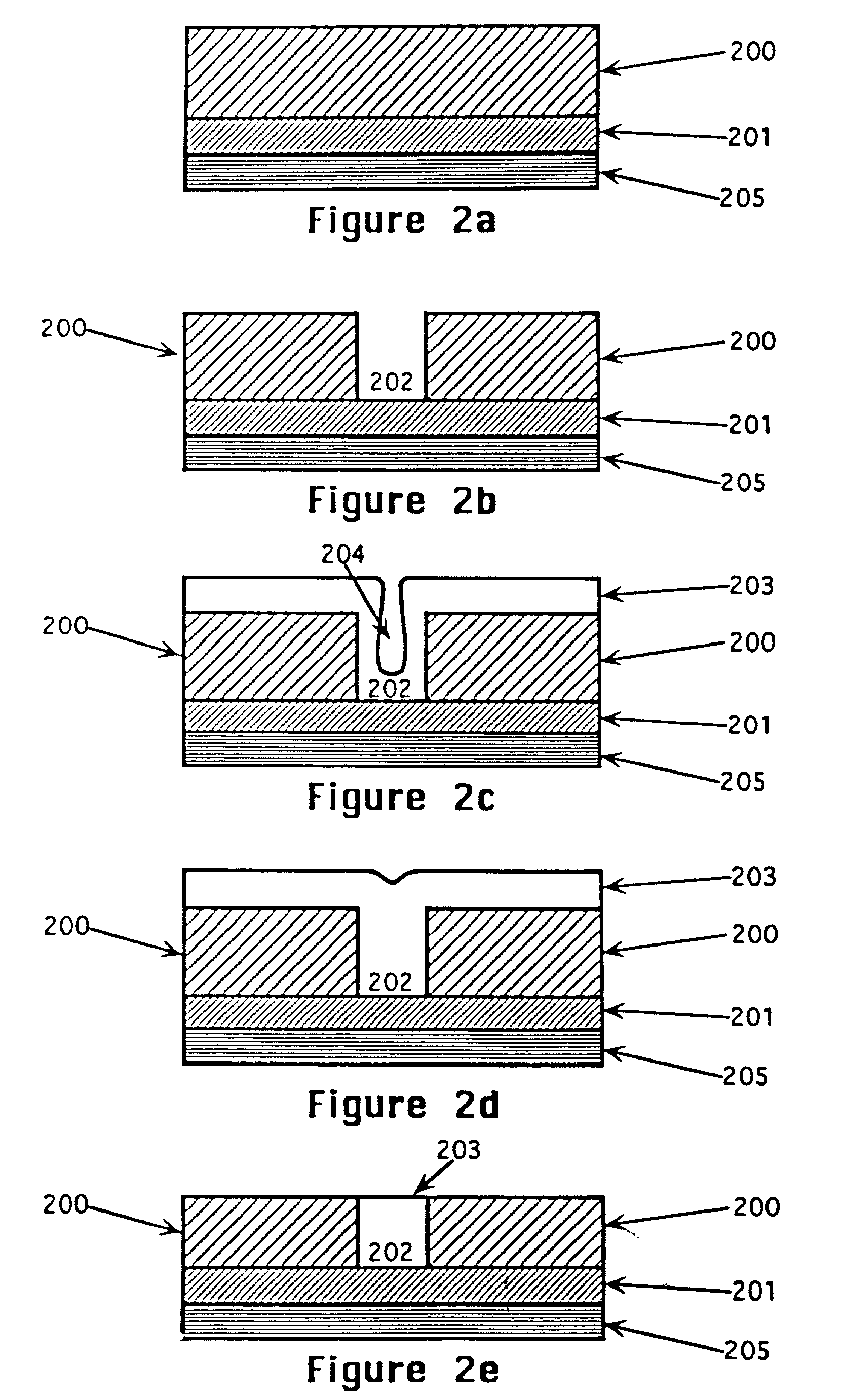Copper reflow process
a technology of copper reflow and copper, which is applied in the direction of semiconductor/solid-state device manufacturing, basic electric elements, electric apparatus, etc., can solve the problems of aluminum resistance becoming non-negligible, resistance-capacitance (rc) time delay of the circuit, and the deficiency of aluminum and its allows becoming limiting factors in achieving superior performance. , to achieve the effect of improving the adhesion, reducing variability, and better modeling a process
- Summary
- Abstract
- Description
- Claims
- Application Information
AI Technical Summary
Benefits of technology
Problems solved by technology
Method used
Image
Examples
Embodiment Construction
[0031] A manufacturable method for forming a highly reliable, electrical interconnection is described which is particularly well suited for advanced VLSI and ULSI applications. In the following description, numerous specific details such as layer thicknesses, process sequences, times, temperatures, etc. are set forth in order to provide a more thorough understanding of the present invention. It will be obvious, however, to one skilled in the art, that the present invention may be practiced without employing these specific details. In other instances, well-known processes and processing techniques have not been described in detail in order not to unnecessarily obscure the present invention.
[0032] While diagrams representing a preferred embodiment of the present invention are illustrated in FIGS. 2a-3e, these illustrations are not intended to limit the invention. The specific processes described herein are only meant to help clarify an understanding of the present invention and to ill...
PUM
| Property | Measurement | Unit |
|---|---|---|
| temperature | aaaaa | aaaaa |
| temperature | aaaaa | aaaaa |
| width | aaaaa | aaaaa |
Abstract
Description
Claims
Application Information
 Login to View More
Login to View More - R&D
- Intellectual Property
- Life Sciences
- Materials
- Tech Scout
- Unparalleled Data Quality
- Higher Quality Content
- 60% Fewer Hallucinations
Browse by: Latest US Patents, China's latest patents, Technical Efficacy Thesaurus, Application Domain, Technology Topic, Popular Technical Reports.
© 2025 PatSnap. All rights reserved.Legal|Privacy policy|Modern Slavery Act Transparency Statement|Sitemap|About US| Contact US: help@patsnap.com



